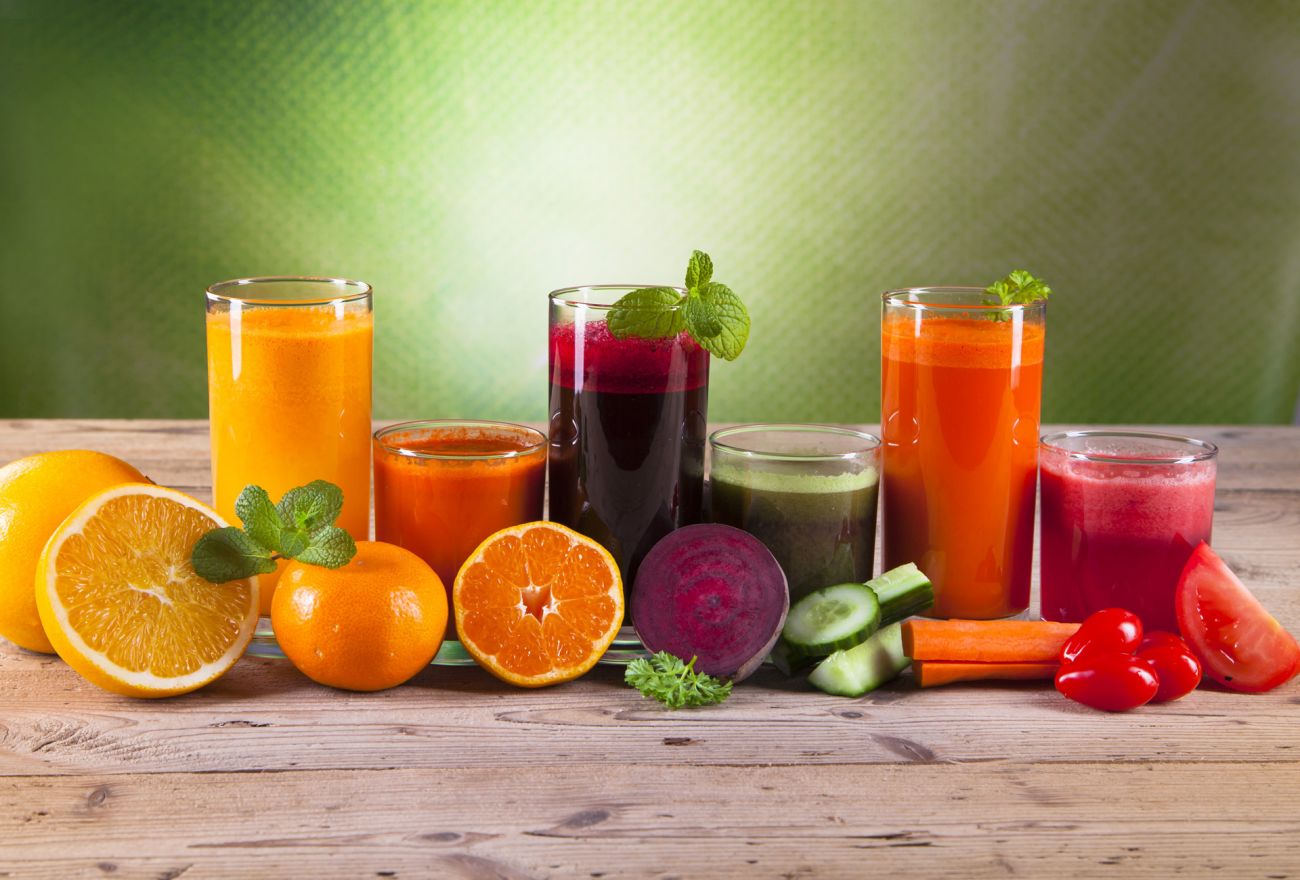Juicing is a current health trend that is gaining popularity. But before you invest in a juicing machine, it is good to be aware of the potential positive and negative aspects to juicing.
When you juice, you are breaking down whole fruits and vegetables into liquid. The healthy fibers in whole fruits and vegetables, usually left behind when juicing, aid in gastrointestinal digestion and help keep you regular. This fiber can also help you achieve a feeling of fullness, and avoid overeating. Juicing can pack a lot of calories in a smaller volume of food. And without the fiber benefit, you may feel less satisfied than you would if you consumed the whole piece of fruit or vegetable in the first place. In addition, fruit and fruit juices contain calories from natural sugars, which in excess can lead to weight gain if you are not careful.
For those who don’t enjoy eating fresh fruits and vegetables, juicing is a reasonable way to add variety to your diet and obtain some of the beneficial nutrients from different kinds of fresh produce you normally wouldn’t consume. It’s also a nice option for including some of your fruits and vegetables on the go if you have a busy lifestyle.
Follow these tips if you want to try juicing:
- Commit to eating at least five servings of fresh produce in your daily meal plan before you add juicing to your routine.
- Wash all of your fresh produce ingredients, use a clean machine, keep your juicing product cold, and consume it as close as possible to the time of preparation to avoid food-borne illness.
- Include more vegetables and less fruit to keep the calories low.
- Only use amounts of food you would actually eat at a sitting to keep calories and portions reasonable. For example, add 1 or 2 carrots to your recipe, not 8.
- Consider adding a serving of cruciferous vegetables to your recipe (such as broccoli, cauliflower, Brussel sprouts, collard or mustard greens, arugula, or kale). These vegetables contain phytochemicals that are associated with reduced risk of several types of cancers.
- Consider adding protein to balance out the nutrient profile of your drink. Plain Greek yogurt is a great addition for the protein, as well as the calcium and probiotic benefit.
- Monitor your weight: if you notice weight gain when you add juicing to your meal plans, you may be consuming too many calories.
Recipes to try:
